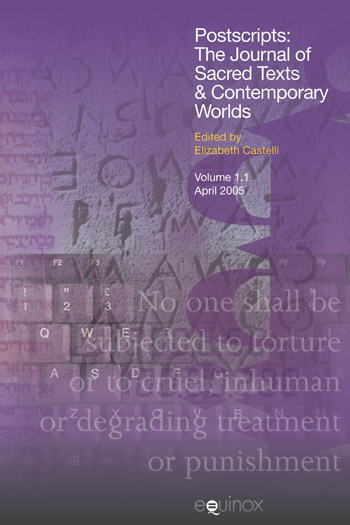Christ as Ancestor Hero
Mark Wheller [+–]
The Corinthian community members employed a Greco-Roman heroic model to graft their ancestral lineages, through the rite of baptism, to the genos Christ-hero. In doing so, the Corinthians constructed an elaborate ancestral lineage, linking their association locally through Christ to Corinth, and trans-locally through Moses to an imagined Ancient Israel. For the community, Christ’s death and resurrection aligned with the death and epiphanies of ancient heroes, as did his characteristics as a healer, protector, and oracle. Relatedly, the “Lord’s Meal,” as practiced by the Corinthians, was a hybrid ritual, as the association synthesized the meal with the already-existing heroic rites of theoxenia and enagezein. This ritualized meal allowed the Christ-hero followers to bring their hero closer to them, imbuing their oracular rituals of prophecy and speaking in tongues, as well as their protection rituals. In response to their hero, the Christ-hero members offered locks of their hair through hair-cutting and hair-offering rituals. Their funerary rites and ritualized meals nuanced and dominated other cultic aspects such as healing, oracles, offerings, baptism, and defixiones. Yet the Christ-hero did more than just focus worship for the community. In fact, it allowed a newly transplanted migrant population to construct a socio-political space within the polis, by restructuring their neighbourhood networks and claiming ownership and status within the greater Corinthian environment.
This study presents a thorough analysis of the aforementioned issues, resulting in a redescription of the Corinthian Christ-hero association that analyzes the association’s ritual practices with careful consideration of the greater Corinthian cultural context. Furthermore, by applying Catherine Bell’s ritual framework to the practices described in 1 Corinthians, this study reveals that the rituals cannot be lifted out of their cultural context. On the contrary, the rituals performed by the Corinthians belong in the cultural context of first century CE Roman Corinth. Consequently, the Corinthian Christ-hero association was not – contrary to much prior scholarly discourse concerning the Corinthian Christ association – a distinct community with unique practices. Rather, the Corinthian association created rituals that mirrored the practices of the greater Corinthian environment.
This study analyzes the Christ-hero association’s practices in the Corinthian cultural context through the passages in 1 Corinthians that highlight the contested spaces of authority. Those passages include: The Lord’s Meal Ritual (1 Cor. 10:16-17 and 11:17-34); Funerary Vicariousness in Baptism on Behalf of the Dead (1 Cor. 15:29); Christ as Protector Hero: Curses as Mortuary Wards/Traps for the Dead (1 Cor. 12:3a); Communication Rituals: Prophecy and Speaking in Tongues (1 Cor. 12:10, 28, and 1 Cor. 14); and Hair-offerings to the Christ-Hero (1 Cor. 11:4-7).







